Statistics show that in 2020, China had 537,100 educational institutions serving 289 million students. The number of full-time teachers working in institutions at all levels was 17,921,800.
I. Preschool education
In 2020, there were 291,700 kindergartens in China. 17,914,000 children joined kindergartens, bringing the total number of children attending kindergartens to 48,182,600. 40,828,300 children attended inclusive kindergartens, accounting for 84.74 % of all preschool children. In 2020, there were 2,913,400 full-time kindergarten teachers across the country. The gross enrolment rate of preschool education institutions was 85.2%.
-No. of children in kindergartens - gross enrolment rate
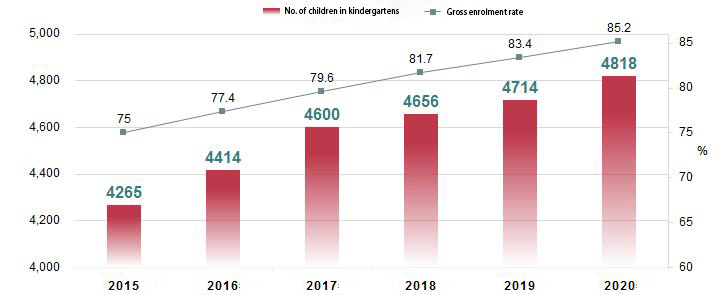
Number of children in kindergartens and gross enrolment rate of preschools
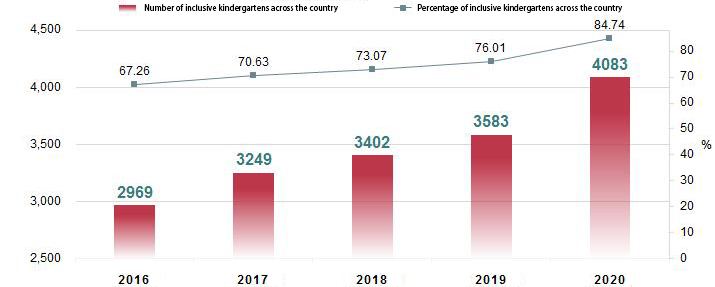
Number and percentage of inclusive kindergartens across the country
II. Compulsory education
In 2020, there were 210,800 schools for compulsory education across the country. The number of new entrants was 34,401,900, bringing the total number of students in compulsory education to 156 million. The number of full-time teachers stood at 10,293,900. The ratio of enrollment to graduation at compulsory education level reached 95.2 percent.

Number of students in compulsory education and ratio of enrollment to graduation
In 2020 there were 158,000 primary schools offering education to 107,253,500 pupils, including 18,080,900 new entrants. There were 6,434,200 million full-time teachers. The net enrollment rate in primary schools reached 99.96%.
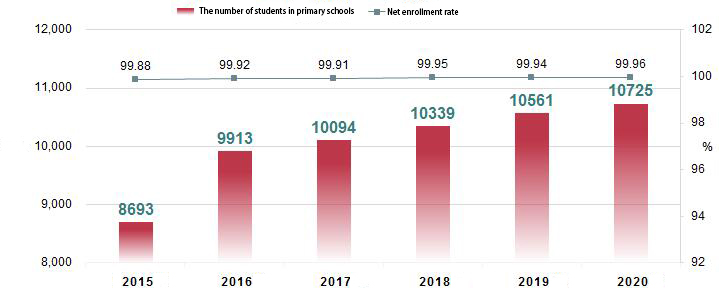
The number of students in primary schools and net enrollment rate
There were 52,800 junior high schools offering education to 49,140,900 students across the country, including 16,321,100 new entrants. The number of full-time teachers stood at 3,860,700. The gross enrollment rate was 102.5%.
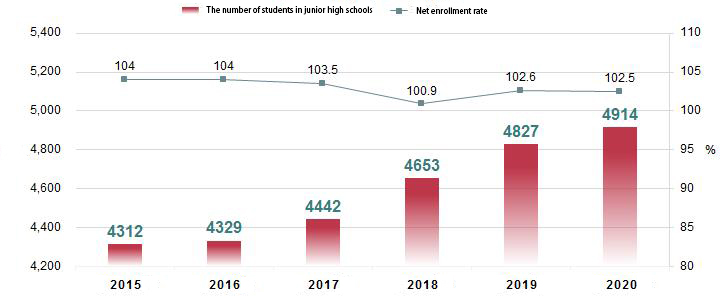
The number of students in junior high schools and net enrollment rate
III. Upper secondary education
In 2020, there were a total of 24,400 schools offering upper secondary education to 41,278,000 students, including 15,040,000 new entrants. The gross enrolment rate stood at 91.2%.
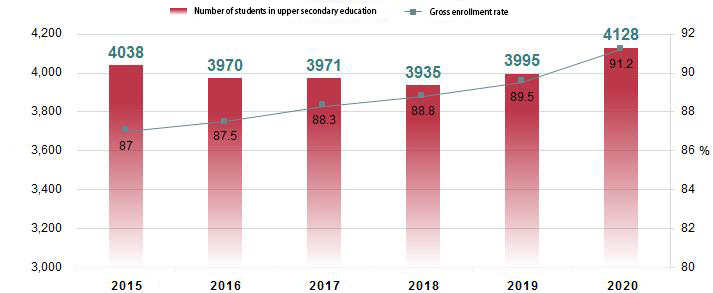
Number of students in upper secondary education and gross enrollment rate
There were 14,200 regular senior high schools offering education to 24,944,500 students, including 8,764,400 new entrants, and employing 1,933,200 full-time teachers.
There were 9,865 vocational schools in China with 16,281,400 students, including 6,275,600 new entrants, employing 849,500 full-time teachers.
IV. Higher education
In 2020, there were 2,738 higher education institutions (HEIs) offering education to 41,830,000 students. 1,270 HEIs, including vocational colleges, offered Bachelor’s degrees. The number of higher vocational education institutes was 1,468. The gross enrollment rate was 54.5%.
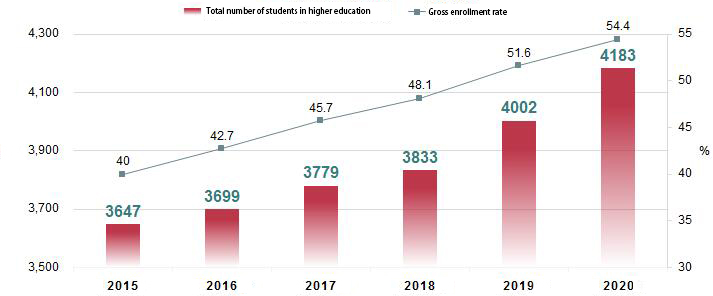
Total number of students in higher education and gross enrollment rate
The total number of students attending undergraduate programs in regular HEIs was 32,852,900, including 9,674,500 newly-enrolled students. 3,139,600 students were pursuing master’s degrees, including 1,106,600 first year students.
The number of students were attending adult HEIs was 7,772,900, including 3,637,600 first year students. There were 8,464,500 students attending online HEIs, including 2,779,100 new entrants.
There were 1,833,000 full-time teachers working at HEIs.
V. Special education
In 2020, there were 2,244 special schools across the country offering education to 880,800 students with disabilities, including 149,000 new entrants, and employing 66,200 full-time teachers.
Notes;
1. The statistics herein is exclusive of data on Hong Kong and Macao Special Administrative Regions and Taiwan Province. All numbers are rounded and therefore the sums of figures for sub items may be not equal to the original sums.
2. Gross Enrolment Rate (GER) refers to the total number of students enrolled at a particular level of education regardless of age, as a percentage of the population in the nationally defined age group for that level of education. The GER may exceed 100 per cent due to the inclusion of non-school age groups (under- or over-age) students.
3. Include regular senior high schools, high schools for adults, and secondary vocational schools. Secondary vocational education includes regular secondary vocational schools, vocational high schools, polytechnic schools for adults and technical school. Technical school data are replaced by those for 2019.
4. The total number of students in higher education includes postgraduate students, undergraduate students, students enrolled in adult HEIs and online higher education, and students enrolled in colleges through self-taught higher education examinations.




